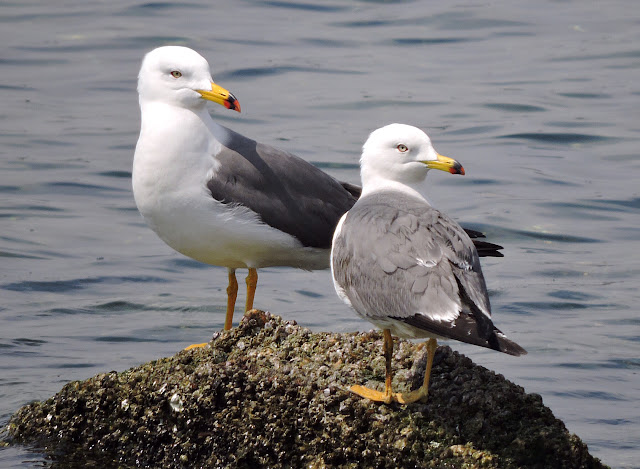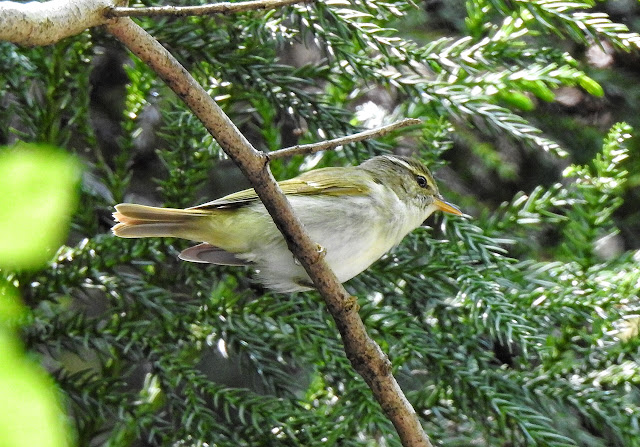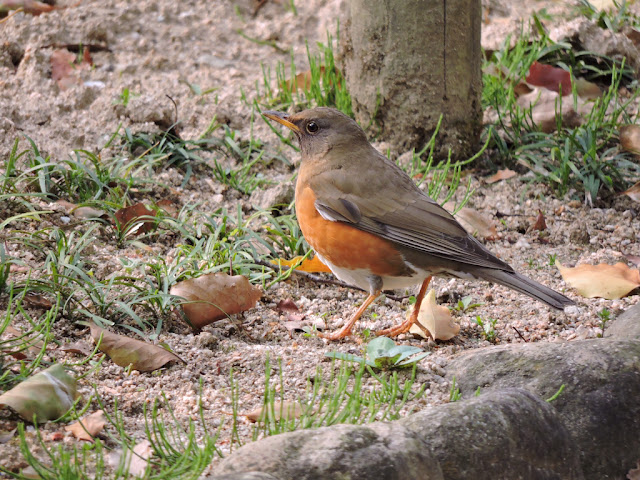One of the few remaining tidal flats in the region, Hamakoshien is an important feeding ground and stopover point for migratory birds--primarily ducks in the cooler months and shorebirds from April to May. The site is a nationally designated Wildlife Sanctuary in Nishinomiya city. At least 89 bird species have been recorded at Hamakoshien (see species list below).
 |
| The west side of Hamakoshien in January, 2016. |
 |
| The east side of Hamakoshien in January, 2016. Around 2000 ducks were wintering here at this time. |
Getting There
I'm fortunate that Hamakoshien is part of my local birding patch, and I can be there in less than 10 minutes on my bicycle. For others coming from Osaka or Kobe, the closest train station is Naruo Station on the Hanshin Line. From Naruo Station it's about a 15-minute walk south to Naruo estuary and the tidal flats.
Finding Birds
The best areas to look for birds are the tidal flats. High tides bring the ducks in closer between October and March. Between April and May, low tides are good for observing feeding shorebirds, although, as with the ducks, high tides bring the shorebirds in closer, making it easier to observe and photograph them. In winter it is not unusual to see 10 or 11 duck species together, with less common ducks like Garganey and Baikal Teal occasionally turning up. Five species of grebe have been spotted here, but Black-necked Grebes are the most common grebe here in winter. Winter is also good for gulls, with Vega, Black-tailed, Black-headed and Common Gulls all present. As the weather warms up in April/May, Ruddy Turnstones, Grey-tailed Tattlers and Whimbrels are easy to spot, particularly at the entrance to the Naruo estuary in the east. Look for Little Ringed Plovers, Lesser Sand Plovers and Kentish Plovers feeding along the shoreline. Occasionally, Eurasian Curlews, Pacific Golden Plovers and Sharp-tailed Sandpipers stop over at Hamakoshien.
 |
| Tufted Duck |
 |
| Falcated Duck |
 |
| Grey-tailed Tattler |
 |
| Greater Scaup |
 |
| Red-breasted Merganser |
 |
| Black-tailed Gulls |
 |
| Little Ringed Plover |
 |
| Whimbrel |
 |
| Ruddy Turnstone feeding on barnacles |
 |
| Striated Heron |
Bird Species List for Hamakoshien (Source: 甲子園浜の野鳥情報 and personal observations)
/
































